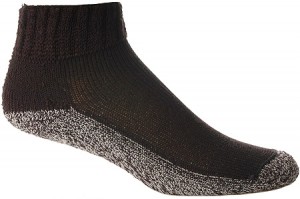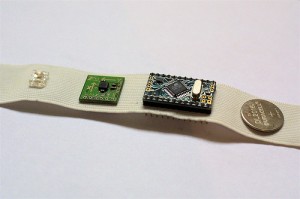These “Smart Socks” Help Diabetics Manage Their Foot Health
 This November, organizations and communities across the country will be joining together in support of National Diabetes Awareness Month. This disease has reached epidemic proportions in America with nearly 26 million people (adults and children) affected. There has never been a more pivotal time to help prevent more people from developing these diseases.
This November, organizations and communities across the country will be joining together in support of National Diabetes Awareness Month. This disease has reached epidemic proportions in America with nearly 26 million people (adults and children) affected. There has never been a more pivotal time to help prevent more people from developing these diseases.
(Be sure to check out our extensive list of diabetes clinical trials from around the country)
In that regard, the American Podiatric Medical Association (APMA), is doing something very special during Diabetes Awareness Month. APMA is highlighting podiatrists from around the country who are developing and utilizing high-tech devices which could significantly change the lives of patients living with a specific form of diabetes.
Smart Socks for Diabetic Neuropathy
Of the millions who have developed diabetes in the U.S., just about half will develop diabetic neuropathy over time. This condition is described as a loss of feeling in the lower extremities due to the nerve damage caused by diabetes. That loss of feeling means that certain sores or open wounds on the patient’s feet can go unnoticed. Eventually infection will set in, and the patient may need to get all or part of the foot amputated.

Dr. David G. Armstrong, the founder of the Southern Arizona Limb Salvage Alliance (SALSA), has been working with a crack team of researchers to integrate smart textiles into the treatment of diabetic patients. By using fiber optic sensors in a modified pair of socks, they can identify “hot spots” (higher temperature zones on the feet indicate where tissue strength is faltering), stress areas around the joints, and high pressure points.
As Dr. Armstrong will tell you, this could help revolutionize diabetes treatment and management. The smart textiles will give doctors the ability to effectively evaluate the specific needs of their patients, which in turn lets them manage their foot health more efficiently. SALSA and three other groups were awarded 2 million in research grants to conduct a three-year study on the “smart socks”.
3-D Printed Models and Specially Designed Insoles
A colleague of Armstrong’s, Nicholas Giovinco, is using 3-D printing to create physical models of the complex skeletal structure for the foot and ankle from X-ray images. This more tangible approach lets the SALSA team identify any deformities or other challenges which could prohibit surgical intervention.
One of the biomedical engineers for SALSA, Dr. Bijan Najafi, tracks the diabetic patient’s heart rate, respiration, and level of activity all in real-time by attaching a smart sensor to their chest. The device can send alerts via smartphone to the diabetes treatment team if their patient starts to experience higher levels of stress (this can complicate certain diabetic symptoms).
Then specially designed insoles can alert the patient’s smartphone via text message if for instance some small object has gotten lodged in their shoe. Most people may think of this as a small trifle, but it can become a serious problem for some diabetics with neuropathy. It could even cause a loss of limb if not handled properly.
Get Your Feet Checked in November
During the month of November, APMA would like to encourage anyone who has been diagnosed with diabetes, or those who may be at risk for diabetes, to be proactive about getting their feet checked. Call your podiatrist today.
If you’re interested, stop by the APMA webpage to see full videos of these smart textiles and other cutting-edge technology. While you’re there, be sure to read up on your risk for diabetic neuropathy and locate a good podiatrist in your local area.